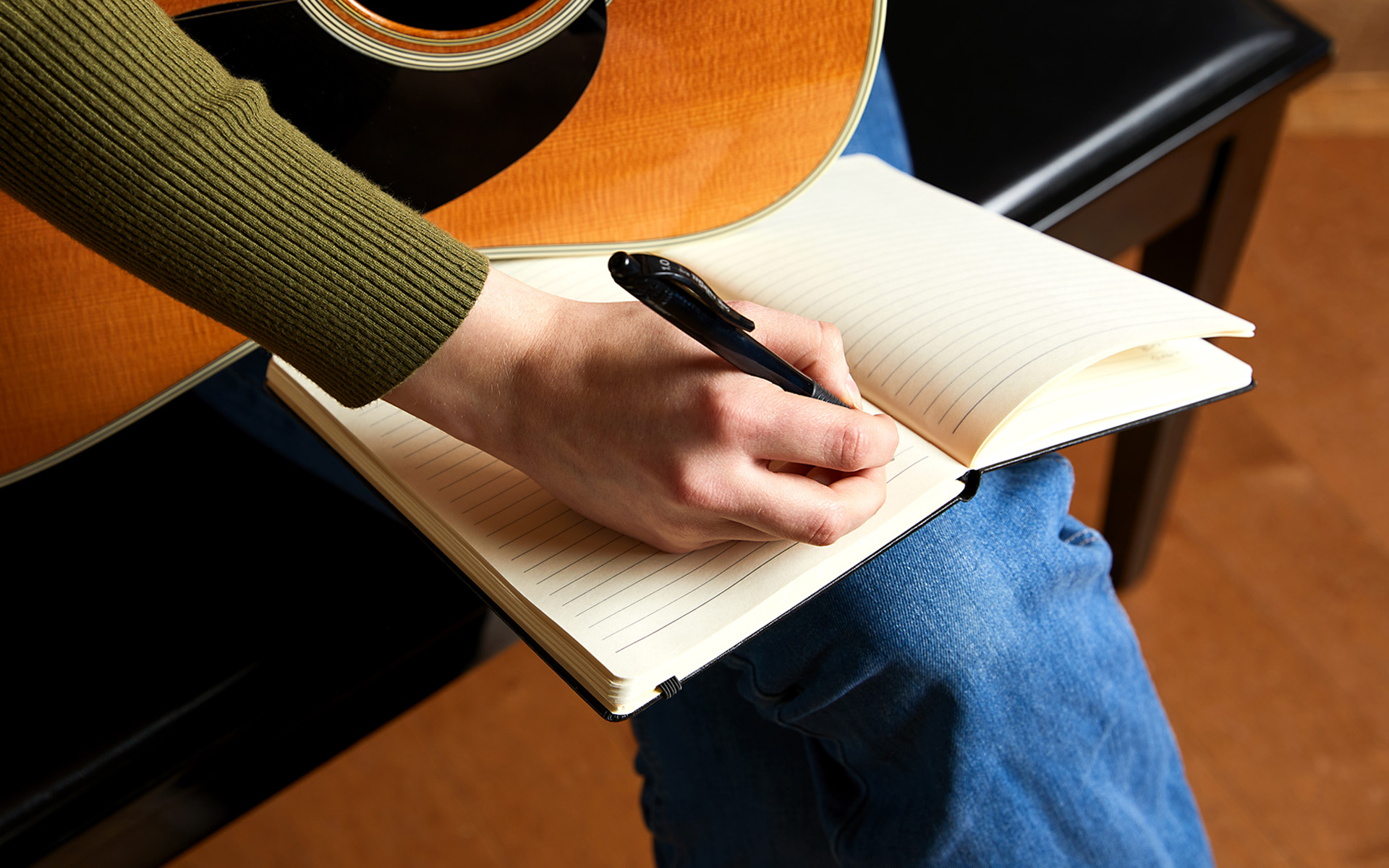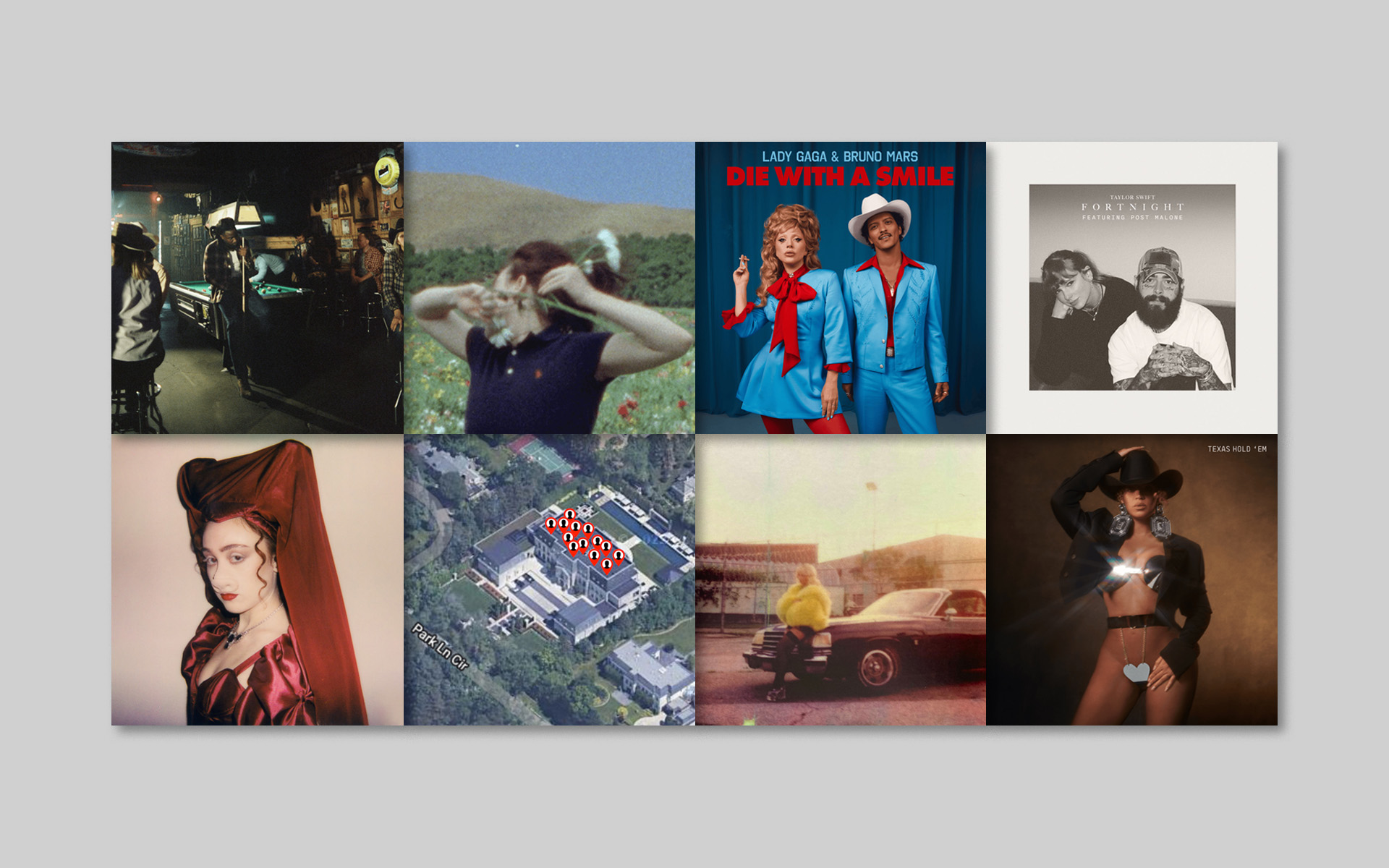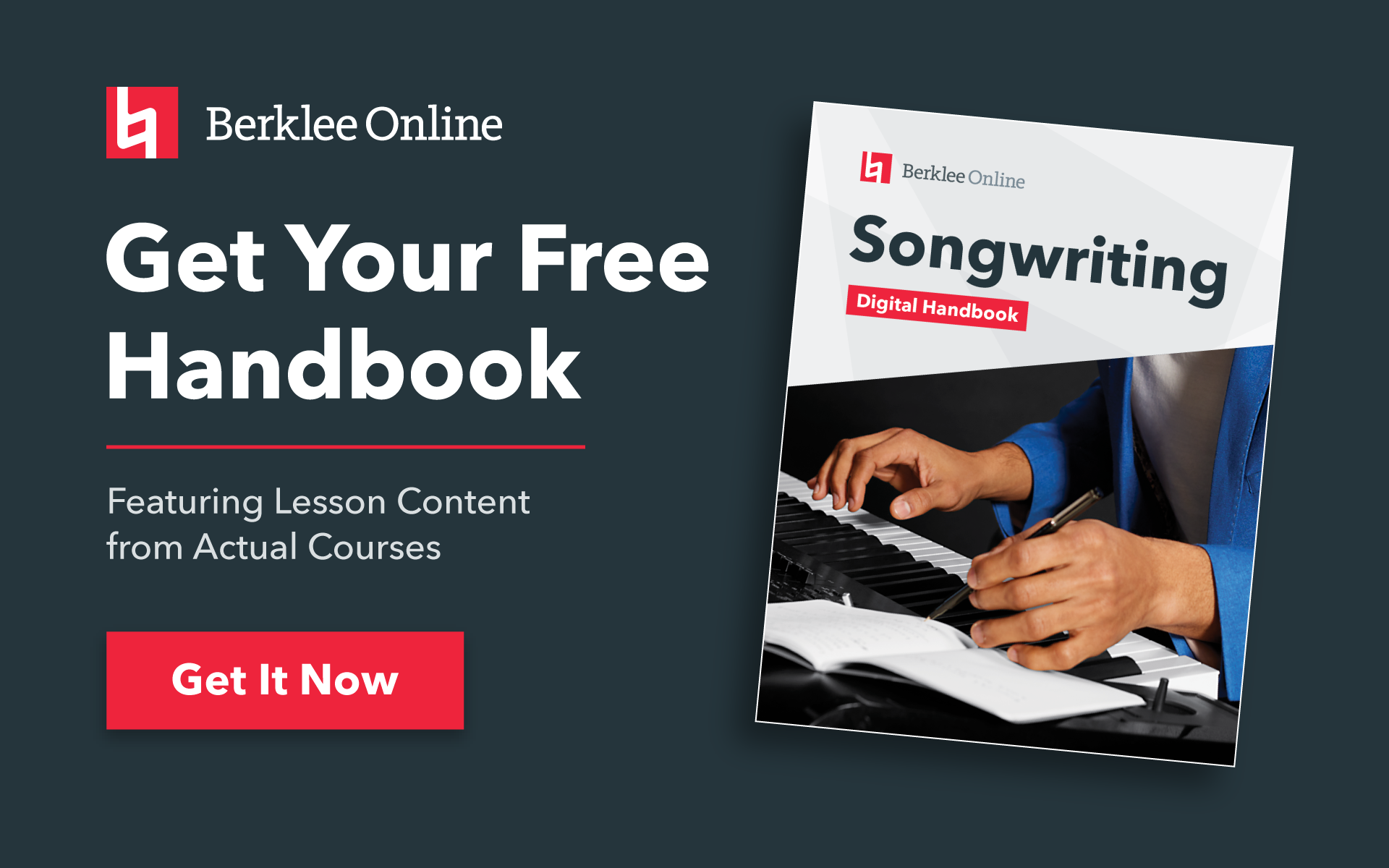The following information on topline songwriting is excerpted from the Berklee Online course Topline and Vocal Production, written by Rodney Alejandro, and currently enrolling.
What is topline? Topline is a specialized niche of songwriting where the focus is on melody, lyrics, and performance over a preexisting track/beat/sonic structure. The role of the topliner is to write a topline that has a single release written all over it. The final product has hooks in the trinity of topline:
- catchy melody
- memorable lyrics
- eventful performance
When talking about topline, the desired outcome can be described as having potential for a “hit,” “smash,” “world beater,” “heat,” or “chart-topper”; no matter the label or term used, the end result is the same: a song that has mass market appeal. Let’s get started by learning a bit of history of how the craft of topline has become a significant role in the creative space of the music industry, as well as take aim at the ultimate goal of topline.
History of Topline Songwriting
Throughout the decades, a hit single has been the target for every label and artist releasing music for the mass market. To that end, all songwriting for commercial release centers around having memorability and catchiness. For commercial success in the music industry, there are some elements that must occur in the music regardless of genre. Songwriters utilize all the tools of songwriting such as rhythm and rhyme, melodic moments, revision, and repetition, to craft unforgettable and, at times, timeless songs.
In my research of the technique of topline, I traced back its origins to jazz called vocalese. A good example of this is the 1952 release of “Moody’s Mood for Love” by Eddie Jefferson, which are lyrics set to the improvised solo of James Moody on the song “I’m in the Mood for Love.” The process was more about technical facility than mass market appeal back then, but nevertheless, most things in music generated by humans have a start somewhere. Let’s take a look at how toplining became more commercial.
It’s All About the Hook
Those catchy phrases—be they lyrical or musical—are the hooks that grab people by the ear and never let go. Even though in most circumstances we hear the first verse at the beginning, hooks are what we tend to remember first. If you’ve taken an undergrad songwriting course with Berklee Online, you’re probably familiar with the maxim that it’s called a chorus because the audience is supposed to sing along. And after years have passed, upon hearing a snippet of a song, chances are it is the hook that the audience will recall first.
To make it to the Top 40 format—the format that plays the most popular songs of the day—a song must have that hook appeal. From the beginning of pop, it was common practice for the pop song to have all these formulations calculated into the songwriting and targeted for radio. As new genres began to gain in popularity, many were held back from the mass market of pop format for lacking the hook.
STUDY SONGWRITING AT BERKLEE ONLINE
Mid-’80s Rap and House
Take rap and house, which are popular today. Those genres struggled to find mass market popularity at their outset as the focus was not a hook, but storytelling in the case of rap, and the music groove in the case of house. To find broader market appeal, they had to adapt, and find ways to connect the music to more listeners; they had to adapt a hook into their respective genres. In the mid-’80s came the invention of the hook singer, a person who could do what the rap or house artist couldn’t do: sing a hook.
Rap, hip-hop, and early EDM music used hook singers as a way to broaden their market appeal. Back then, most of the singers were not recognized as the practice was that when a work was made for hire, the hiring or commissioning party would be considered the author and the copyright owner.
Heading into the late ’80s and early ’90s, hook singing became more popular in the non-pop music genres. Rap began to find its way into the mainstream by making pop music. The verses were all rap but the chorus was all sung.
’90s Hip-Hop
Throughout the ’90s, hook singing became more notable at bringing hip-hop into the mainstream. Producers like Dr. Dre, the Neptunes, and Timbaland, employed the use of hook singing, giving rise to artists like Nate Dogg, Mary J. Blige, and later Pharrell Williams and Kid Cudi, who began to have their voices heard over the airwaves. As producers mastered the art of the track, they became more prominent in the songwriting process.
The Craft of Topline is Born
By building a song’s bottom line with the rhythmic and harmonic elements, they would then collaborate with singers and/or songwriters to fully finish a song. Many of these writers would take key elements of the beat to formulate melodies, and use some of the strongest parts of the track to craft hooks. Thus the craft of topline was born, where the melody and lyric are derived from a beat that a producer has created.
The topline picks up on essential features within the track to create strong chorus sections, complementary verse melodies, and lyrical concepts that keep the song focused in today’s trends and current market conditions. Today, part of the success of a topliner depends on their ability to pick great tracks that will inspire them to write a hit topline.
The Bottom Line of Topline
The bottom line of topline is to create a catchy, memorable melody with lyrics over a beat that has hit potential and is expected to be released as a single. Most topline songs are targeted attempts to be placed with an artist to add to the marketing process of their release cycle. Managers, labels, and artists are always on the lookout for fresh song concepts that will help break an artist or project into the marketplace.
Toplining for artist releases tends to focus on creating songs for mass market appeal, that is, songs that work on radio and aim for the Billboard charts, the major pop playlists of streaming services, and TV broadcast possibilities, whether for brand promotion or for use in popular TV shows. These types of topline songs tend to use uptempo BPM, have upbeat energy, and make use of lyrical concepts that create opportunities for visibility, hashtags for trending on social media, or becoming ubiquitous amongst certain demographics. Topline writers are always aiming for the top of the charts, no matter the genre or style.
Not all toplines are completely uptempo in BPM. Midtempo songs in all genres can have rhythmic energy and make people dance, as long as the beat has bounce, groove, and something people can move to.
Topline Songwriting Today
In the current music industry landscape, producers, DJs, and beat makers frequently pitch tracks to labels, publishers, managers, and artists in hopes the track has market appeal, and now a topline can be crafted to suit a project. Other times, producers/DJs are pitching a track out to topliners looking for a song to release under their own name. And there is also a marketplace where producers can sell beats to anyone who feels they could topline over the beat.
Whether it is for radio, playlists, TV, or festivals and large-scale events, topline’s target is the top of the charts, top playlists, Top of the Pops, and Top 40. Toplining now extends to TV/film and brands seeking to market their products using a finely crafted song towards a specific demographic.
Check out the interview I did with Berklee Online’s 4/4 series to learn more about toplining (and my go-to recipe for when I’m entertaining).









